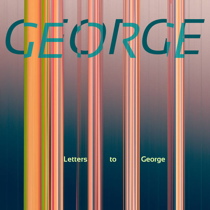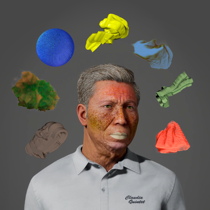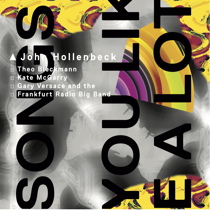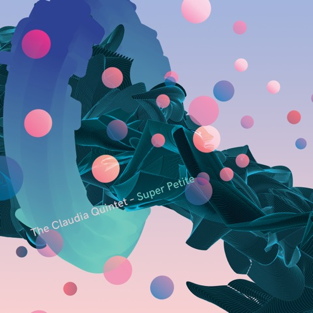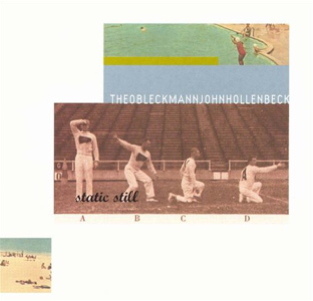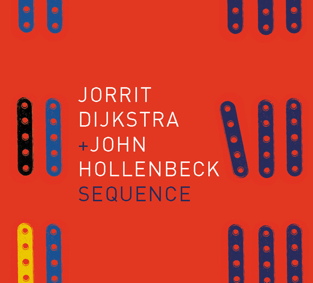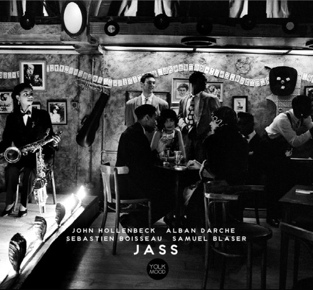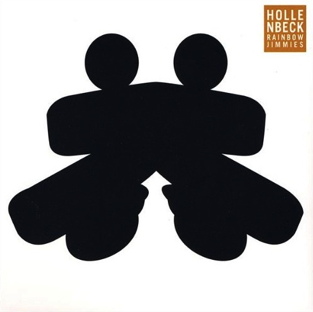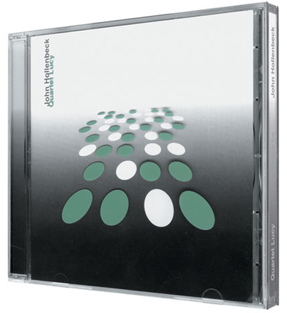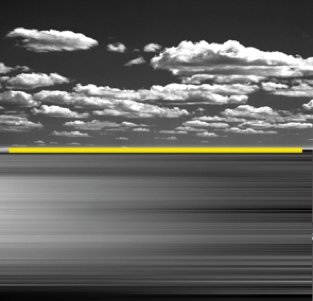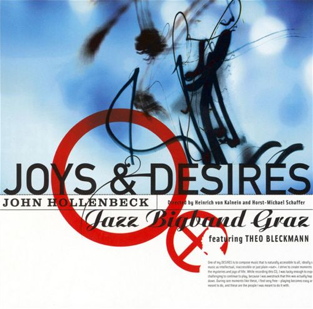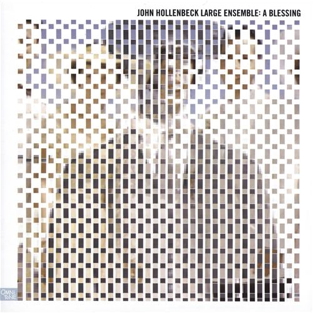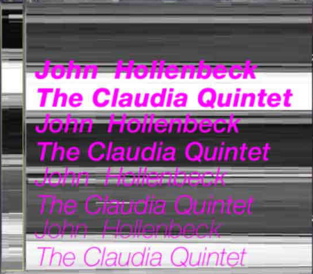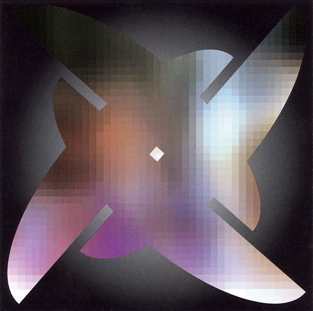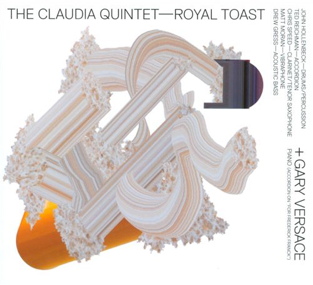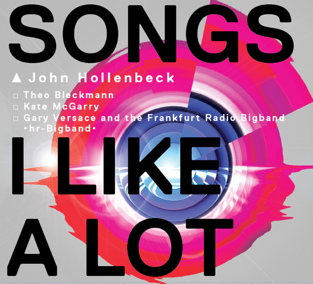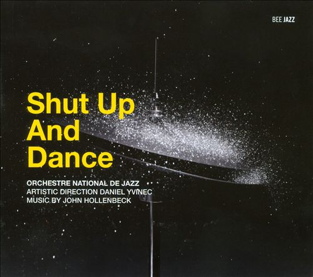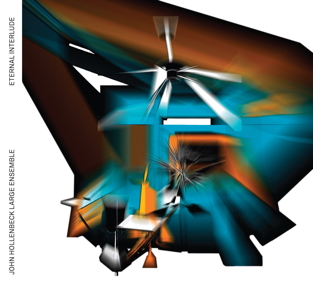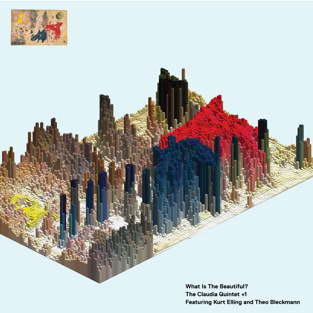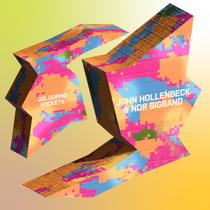
NDR Bigband
Thorsten Benkenstein · trumpet
Ingolf Burkhardt · trumpet
Christian Höhn · trumpet
Percy Pursglove · trumpet
Fiete Felsch · Alto Saxophone, Soprano Saxophone, Clarinet, Flute, Alto Flute
Peter Bolte · Alto Saxophone, Soprano Saxophone, Flute
Julius Gawlik · Tenor Saxophone, Clarinet
Frank Delle · Tenor Saxophone, Flute, Clarinet
Luigi Grasso · Baritone Saxophone, Bass Clarinet
Dan Gottshall · Trombone
Klaus Heidenreich · Trombone
Stefan Lottermann · Trombone
Ingo Lahme · Bass Trombone
Sandra Hempel · Guitar
Ingmar Heller · Bass
Florian Weber · Piano, Rhodes
Marcio Doctor · Percussion
with Special Guests:
John Hollenbeck · Drums, Timpani
Patricia Brennan · Vibraphone, Marimba, Glockenspiel, Crotales, Timpani
Matt Moran · Vibraphone, Marimba, Glockenspiel, Tapan
JC Sanford · Conductor
John Hollenbeck is a longtime master of the unorthodox. Since entering the global stage more than two decades ago, the percussionist, composer, and bandleader has shown an uncanny knack for making curious combinations seem natural, even inevitable. The Claudia Quintet turned an offbeat lineup of clarinet, accordion, and vibraphone into one of the coolest combos in creative music. Ditto Quartet Lucy, comprising voice, guitar, and again vibraphone. Yet when Hollenbeck has worked with more conventionally constituted ensembles, like the venerable big band, the distinctiveness of his compositional signature thwarts routine.
In his newest venture, Hollenbeck manifests both attributes at once. Conceived for the NDR Bigband, an elite German group founded in 1945 by the Hamburg-based public broadcast institution Norddeutscher Rundfunk, Colouring Hockets takes advantage of Hollenbeck’s well-established aptitude for writing for big assemblages—a talent he’s honed with his own Large Ensemble and other groups. But he renders the familiar new and fantastical by integrating a percussion quartet into the ensemble: blended, yet distinct.
Hollenbeck is quick to point out that this specific idea was not of his own devising: NDR Bigband percussionist Marcio Doctor, a Grammy award-winning percussionist and composer, suggested the format. Originally from Buenos Aires, Doctor has collaborated with a diverse range of star composers and performers, including Carla Bley, the Brecker Brothers, Vince Mendoza, and Bob Mintzer. As a longtime member of the NDR group, thinking big comes naturally to Doctor, who described his aspirations in a mission statement:
Inspired by my love for jazz, improvised music, contemporary, and ethnic music, I dreamed of creating a sound and setting that I hadn’t heard before for this new project. The core sound of marimba, vibraphone, drumset, and hand-drums plus the brass and woodwinds felt very appealing to me. Rhythm being the driving force, but with an emphasis on timbre and texture as well.
As it happened, Doctor was an admirer of Hollenbeck’s oeuvre. The drummer had performed as a guest with the NDR Bigband previously, but hadn’t written for the group. “But obviously I’ve done a lot of writing for big band, and he’d heard that,” Hollenbeck explained in a video chat from Montreal, where he has lived since joining the McGill University faculty in 2015.
Doctor, he added, expressed admiration for the way Hollenbeck’s writing slips into the cracks between disparate styles of music – progressive jazz, contemporary classical music, post-rock, and so on – melding and amplifying what’s useful and effective about each.
Initial conversations took place just before the onset of the COVID-19 global pandemic, which meant that like everything during that period of isolation and restriction, the project had a prolonged gestation online. Among the first decisions made was the featured quartet. In addition to Hollenbeck and Doctor on drumset and hand percussion, the music was tailored to suit Matt Moran, the versatile vibraphonist Hollenbeck has worked with since the earliest days of his career, and Patricia Brennan, a Mexican-born virtuoso at home on vibraphone and marimba as well as classical implements like timpani, who’s worked in Hollenbeck’s Large Ensemble.
However strange the notion of fusing a quartet of percussionists to a jazz orchestra might seem, there’s precedent in the time-honored European tradition of the concerto grosso, a Baroque-era invention in which a smaller ensemble is nested within a larger one, with musical material passed back and forth in both directions. Hollenbeck designed his charts to accommodate players for whom reading notated scores is second nature, as well as others chiefly comfortable as improvisers, so that everyone was on the same page.
Setting the stage is the opulent, cinematic “Opening,” which dates back to Hollenbeck’s earliest New York outfit, Refuseniks, and appeared on the Claudia Quintet’s 2004 sophomore release, I, Claudia. Two more Claudia pieces appear in new guises: “Entitlement” was on Evidence-based, the band’s socially distanced COVID-era collaboration with poet Eileen Myles, while “Pure Poem,” which jigs like a bodhrán reel on steroids, was on the quintet’s 2016 album, Super Petite. “Shaking Peace” originated as Gray Cottage Study #2 (“Getting Chilly”) played by Moran and violinist Todd Reynolds on Hollenbeck’s 2008 album, Rainbow Jimmies, and reappeared under its present name on the 2010 Orchestre National de Jazz album, Shut Up and Dance.
Then there’s the new original pieces. “Cool Code” is a pattern-based workout that’s easy on the ears but challenging for the players, with a treacherous trumpet part. “Owts Hgis” (”Two Sighs,” backward) is part of a family of related pieces in which Hollenbeck tasks the instrumentalists with vocalizing over a virtuosic prepared piano part.
As for the beautifully plainspoken closer, “sum” – like “lud,” the opener on his 2018 Large Ensemble album, All Can Work – Hollenbeck credits serendipity. “I listened to it and thought, I don’t know who wrote that—it just came out of the sky,” he said, laughing. “I do a lot of prep work for my pieces, and it is a slow-process. But once in a while in the middle of all that, something else just pops out and all I can say is…thank you!”
That leaves the two percussion showcases that helped to inspire the album’s title: “Marimba Hocket,” featuring Brennan and Moran, and “Drum Hocket,” for Doctor and Hollenbeck. The titles reflect a musical technique dating back to the medieval era, in which a melodic line is broken up among two or more performers. The album’s title extends the term to a new level: hocket referencing the conversation between Doctor’s bold idea and Hollenbeck’s abundant imagination, and colouring (spelled in the manner of Hollenbeck’s current Canadian home) evoking the brilliant, expanded palette provided by this most unorthodox assemblage.
© Steve Smith 2024
Steve Smith is a writer and editor based in New York City. He has written about music for The New York Times and The New Yorker, and served as an editor for the Boston Globe, Time Out New York, and NPR.

 MENU
MENU